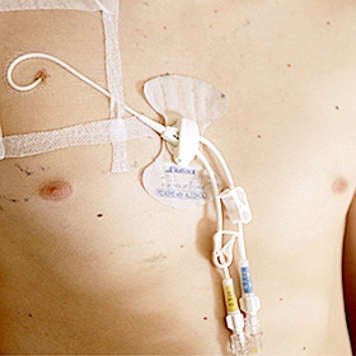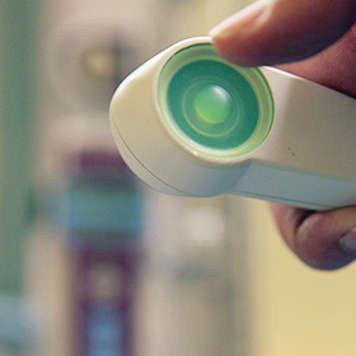Critical care unit
After the surgery, you will be brought to the critical care unit (CCU), where a team of transplant and critical care doctors and nurses will take care of you.
The team will watch you closely during your recovery to check for any problems. The nurses will do frequent checks on your temperature, heart rate, breathing rate and blood pressure. They will also be checking different minerals (for example potassium) in your blood.
Tubes
When you wake up, several new tubes will be connected to your body. These will be in place for a few days while you recover. Some will be removed when you move from the CCU. It is important that you do not pull at any of these tubes.
- A catheter (flexible tube) will be connected to your bladder through your urethra. This drains the urine produced by your kidneys. The catheter will be in place for seven to 10 days. Your urine output (the amount of urine you produce) will be measured every 15 to 30 minutes, day and night, during this time.
- A drainage tube near your incision may also be in place to drain blood and fluid collecting around your new kidney. This tube will be removed two to seven days after the surgery, once it is no longer draining any fluid.
- Some patients will have a nasogastric (NG) tube going in through their nose and down into their stomach. It is designed to drain the fluids in your stomach, but it will not be needed for most patients.
- You will have an oxygen mask or nasal cannula (plastic tube connected to two prongs placed in the nostrils) to give you extra oxygen while you recover from the surgery. It will be in place for two or three days.
- Sometimes, the tube that the anaesthetist used during the surgery to help you breathe may still be in place when you wake up. The tube is attached to a machine and is placed in your mouth and down your throat. If the tube is still there when you wake up from surgery, it is usually removed one or two days later and replaced with an oxygen mask.

IVs
- Intravenous (IV) lines may be inserted into a vein in your hands or arms so that the team can give you medicines and replace the fluids you lose through your urine. You will likely need to use this IV for two or three days after surgery.
- An arterial line is a thin tube that will be inserted into an artery in your wrist to monitor your blood pressure more accurately. Your medical team may take blood samples from here too. The arterial line will be in place for two or three days.
- A central venous line (CVL) is a tube that will be inserted into a vein in your neck. It will be tunnelled under your skin and come out through your chest. The team will use it to give you fluids and medicines, take blood samples for tests and take different measures of your blood pressure. This line will likely stay in for a bit longer than the others, normally about two months.
Monitors
You will be connected to a monitor by your bedside with wires that are attached to your chest through “sticky pads”. This monitor will display your blood pressure, heart rate, temperature and breathing rate.
Your blood pressure is measured through your arterial line as well as with a blood pressure cuff that inflates every so often, usually every 15 minutes to every two hours. The nurses will be able to see all these numbers on the monitors. If there is any problem with the numbers, an alarm will sound to tell the nurses.
Medications
Immediately after surgery you will receive medications to suppress (weaken) your immune system. This stops your body from attacking and rejecting your new kidney. You will also receive several medicines to help avoid infection.
Other medications will be used as well, but these vary from person to person. Your doctor will talk to you about the medications that you need.

Pain relief
You will feel pain in your lower belly while your incision (cut) is healing. One of your IVs will contain pain medicine that will help you keep your pain to a minimum. Often a small amount of this medicine will continually run in the IV, but you will be able to press a button to give yourself more pain medicine if you need it. Pain medicine that is delivered this way is called patient-controlled analgesia (PCA) - analgesia is another name for pain relief.






